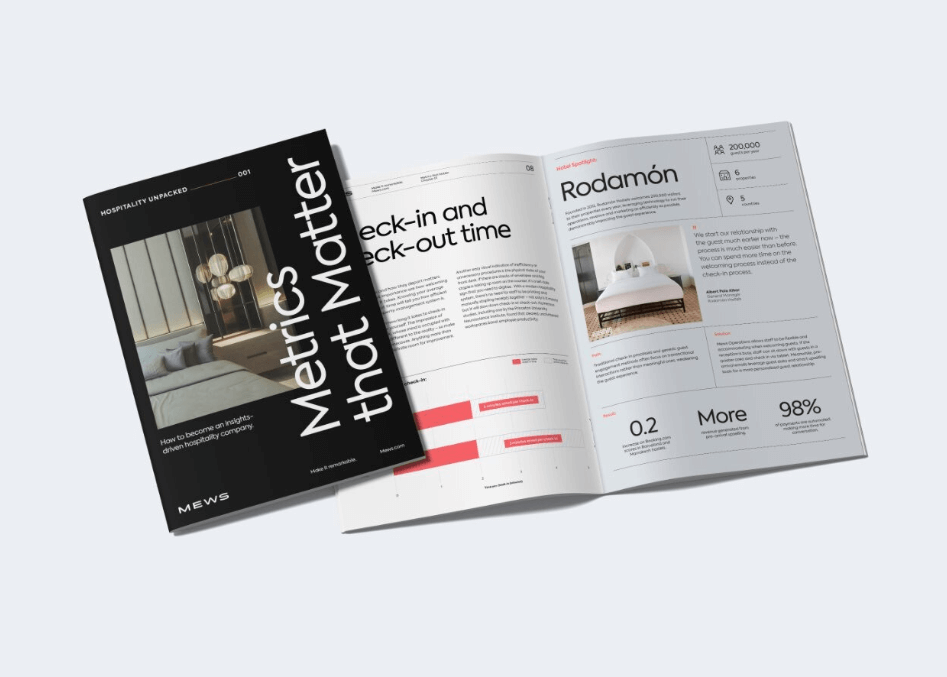For hoteliers, labor costs represent a sizable portion of fixed costs. It can be challenging to strike a balance between an exceptional guest experience and having the right number of staff to remain cost-effective.
We'll look at labor costs within the hotel industry and how to minimize them to ensure optimal profitability. We'll also identify some of the most impactful factors contributing to expenses. Keep reading for actionable insights and strategies that reduce labor costs without compromising service.
Table of contents
What are the labor costs in hotels?
Hotel labor costs can represent as much as 25% of operating expenses. Let's explore the most significant labor costs and see how to maximize profitability even when inflation rates are particularly high. The lower your fixed costs are, the more cost-effective your operations will be.
Costs include wages and salaries, training, benefits, time off, overtime, turnover and recruitment, scheduling, and contractors. Discover strategies to reduce hotel operating costs.
Wages and salaries
Wages and salaries are among the most significant hotel labor costs. It's the money invested in paying for all levels of employees, including receptionists, housekeeping, food service, managers and contract workers.
Due to ongoing staff shortages, hoteliers must pay more to attract qualified workers, bumping up fixed costs. Learn how to manage staffing shortages.
Benefits
Besides a base salary, hoteliers should provide benefits and perks such as health insurance, bonuses, incentives, retirement plans, and more. All of these contribute to labor expenses. The rule is simple: the smaller the supply of qualified employees, the higher the price to capture them.
Overtime and extra hours
During the holiday and peak season, hoteliers may require staff to do overtime or extra hours to meet guest expectations and a surge in demand. This can drive up expenses because overtime costs more.
Training
Training is an investment – it includes workshops, onboarding, or professional development. Although it enhances employee skills and performance as well as customer satisfaction and performance, it contributes to the rise in fixed costs. Learn more about the importance of training your staff.
Turnover and recruitment
Turnover and recruitment require you to invest time and money in finding and training new team members. You'll need to conduct interviews, advertise job openings and provide onboarding. As a result, you'll need more staff to keep operations running while others focus on hiring and training.
Scheduling and staffing levels
The right balance of adequate staffing levels will minimize fixed costs without compromising the quality of service. Scheduling is an important part of this balance – it ensures enough people can cover crucial tasks that contribute to seamless operations without overstaffing.
How to minimize labor costs in hotels?
Managing labor costs can affect how successful your hotel is. You want to manage guest volumes adequately, pursue guest satisfaction and maximize revenue. Let’s look at how you can minimize operational expenses relating to labor.
Accurately forecast
Hotel forecasting is about estimating demand based on historical data and industry trends. It helps you to predict business volumes and occupancy. That way, you can schedule the right number of workers.
Overstaffing leads to unnecessary costs, while understaffing can negatively affect guest satisfaction. Your goal is to always match staffing levels to demand and occupancy.
Understand your hotel’s needs
Understanding your hotel's personnel needs informs you of the minimum number of staff necessary to operate efficiently. Identify your busy times and when there are lulls so that you can plan breaks around those. Tip: Schedule more staff around check-in and check-out times.
The same applies to your busy times of the year and peak season. Maybe you'll need to hire temporary staff to handle high demand. Or, it might be more cost-effective to keep team members on a year-round payroll with limited hours.
Make a task list for each shift
Running the front desk, maintenance and housekeeping happens independently of occupancy levels. Instead of having a dedicated person for each of these tasks, it can be more cost-efficient to hire staff who can perform multiple roles depending on demand.
Make a list of what needs to be done during each shift and divide the tasks among the staff you keep on payroll during the low season. Making a list of tasks helps you understand how many people are needed, keeping in mind vacation days, days off, and potential sick leave.
Automate
Automating processes like check-in is a fantastic way to redirect staff to areas where human resources are essential. Explore mobile check-in, kiosks, or digital registration – all of them speed up daily operations and allow your team to focus on curating remarkable experiences. Using a modern hotel PMS can help coordinate these processes efficiently.
Conclusion
We’ve looked at the main fixed costs in hotels and the best strategies for managing expenses. With labor being a significant aspect of a hotel’s operational expenses, you want to minimize unnecessary costs to ensure financial success. Just be sure to maintain an excellent quality of service that will encourage guests to return.
Download our guide The Metrics that Matter
 How do you evaluate performance on your property? Given the vast amount of data at your disposal, selecting the appropriate metrics is crucial for achieving success. This report delves into the key performance indicators within the hospitality industry that are instrumental in informing operational, financial, and marketing strategies for contemporary hotel managers.
How do you evaluate performance on your property? Given the vast amount of data at your disposal, selecting the appropriate metrics is crucial for achieving success. This report delves into the key performance indicators within the hospitality industry that are instrumental in informing operational, financial, and marketing strategies for contemporary hotel managers.




.webp)
